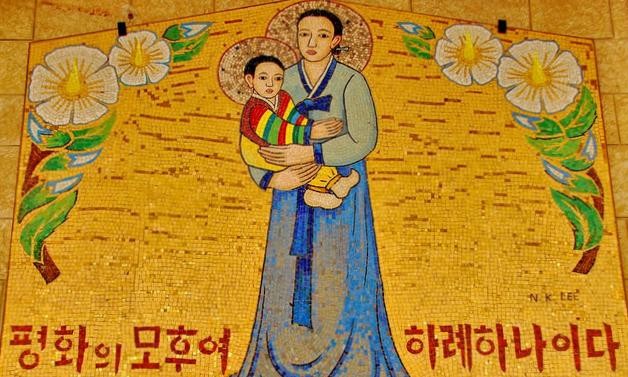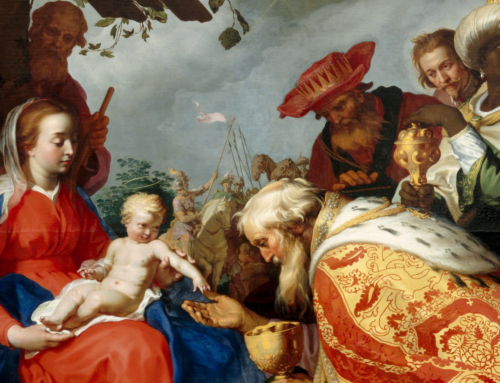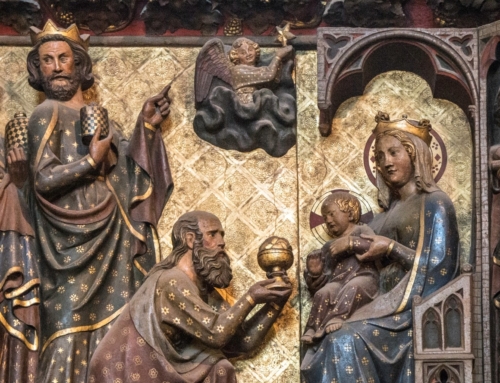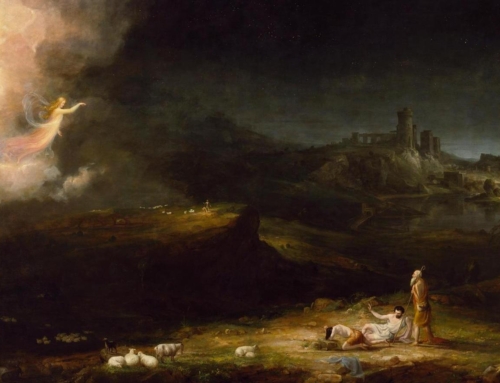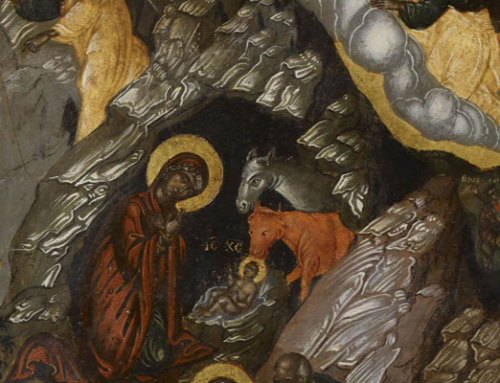In college I studied abroad for a month in Israel. The course itself was part seminar and part pilgrimage—perhaps mostly pilgrimage. We discussed ancient interpretations of the mysteries of Christ’s life and then visited the places where those mysteries transpired. When we went to Nazareth, I happened to be ahead of our caravan, so I decided to look around town before meeting back at the church for Mass. After turning a few corners I encountered a crowd of hundreds of people, holding banners and candles, playing songs and singing. As I approached, a young woman emerged with a dutiful air: “Hello.” she said, “Would you like to lead the procession?”
They were going to the Basilica of the Annunciation, consecrated in 1969 to enshrine the grotto where the angel told Mary that she would bear a son. Funding for the shrine came from a multitude of countries from around the world. Accordingly, the interior is decorated with mosaics of the Virgin and Child that reflect the physical features of the peoples that contributed.
The woman gave me a large icon to hold and set me at the head of the host. It was a painting of the Virgin and Child in classic Byzantine style. With the icon I led the throng through the streets, all of us praying the Rosary as we went. Entering the courtyard of the church, we processed along a kind of cloister, adorned with a long series of Marian mosaics—each with a national character: Korean, Chilean, Thai, and so on—most of them depictions of the mother holding her child, the fruit of the Annunciation.
The mystery of the Annunciation is the mystery of the Incarnation. It’s like Christmas in that way. During Advent the Church waits for two comings: the coming of God as man and the coming of that man as judge. In the liturgy of the second half of Advent, from December 17th to the 24th, it’s the former coming that comes to the fore. This year, the Gospel for the Fourth Sunday of Advent recounts the annunciation to Mary. Three days later, the liturgical wait is over on the Feast of the Nativity—this mystery being a kind of manifestation of what happened in the grotto in Nazareth nine months earlier.
The procession entered the Basilica and streamed down through the lower level toward the grotto, which was embedded at the lowest point of the Church. There was in the floor of the upper level a large circular opening such that when I stood in front of the grotto and looked up through the ceiling I could see the dome of the Basilica hundreds of feet up. The procession was still spiraling down from the heights when the people in front began to approach me to reverence the icon.
In the little cave behind me was an altar with the inscription, Verbum Caro Hic Factum Est, “The Word became flesh here.” There I stood, holding the icon, as one by one the devotees came by and kissed it. There were hundreds of people, but one of them stands out in my mind, a small boy. He kissed the Blessed Virgin and then, seeing the baby Jesus in her arms, he kissed him too. Of all the people there that night, he was the only one I saw reverence the icon twice.
There was a kind of logic there. The Incarnation is precise. The Word became flesh in Nazareth, not in Spain or the South Pacific. He took on particular human features. If Jesus was 5’11”, he was not 6’1”. Likewise, God had chosen Abraham, not his father Terah. And so much of God’s work in choosing Israel was convincing his people that they were not their neighbors. In order to be Israel, it was necessary, especially early on, not to be Canaan.
Christians speak of “the scandal of particularity,” for people balk at the suggestion that all human culture and striving could find their fulfillment in a first-century Palestinian. We have to look at it from God’s perspective. Over Israel’s long history God brought his people closer and closer to himself—from the confused milieu of paganism to a more secure monotheism, from the infidelities condemned by the judges and the prophets, to a stronger sense of God’s utter uniqueness in the centuries leading up to Christ. God was bringing them closer and closer to himself, and suddenly he brought the process to an amazing culmination: He himself became an Israelite.
At the same time, God extended the election of Israel to the whole world: “Go, and teach all nations” (Mt 28:19). Such was Jesus’ astonishing interpretation of Isaiah 2:2, which is read on Advent’s First Sunday: “In days to come, The mountain of the LORD’s house shall be established as the highest mountain and raised above the hills. All nations shall stream toward it.” In Christ, the God of Israel sent his Apostles to all the nations. It was his house, the Church, that would stream toward them!
The reason for this interplay of exclusivity and intimacy, particularity and universality, is the Incarnation. Everyone who saw Jesus was looking at God. The woman with the flow of blood touched the hem of God. The woman who kissed Jesus’ feet kissed the feet of God. When Mary kissed her son, she was literally kissing God.
This is why so many nations helped to build the Basilica in Nazareth. The Incarnate Word had gone forth to all the nations, and now they were processing back to him.
✠
Image: N.K. Lee, Korean Virgin and Child at the Basilica of the Annunciation, Nazareth

